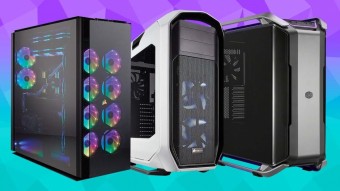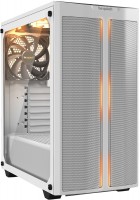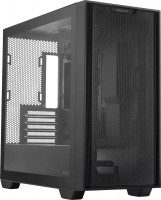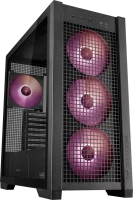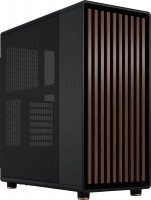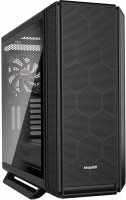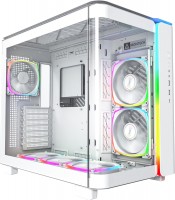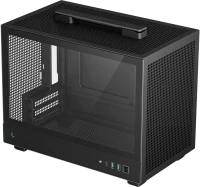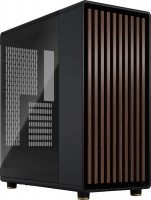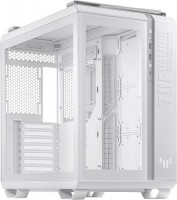How to choose a computer case?
We independently verify the products and technologies we recommend.
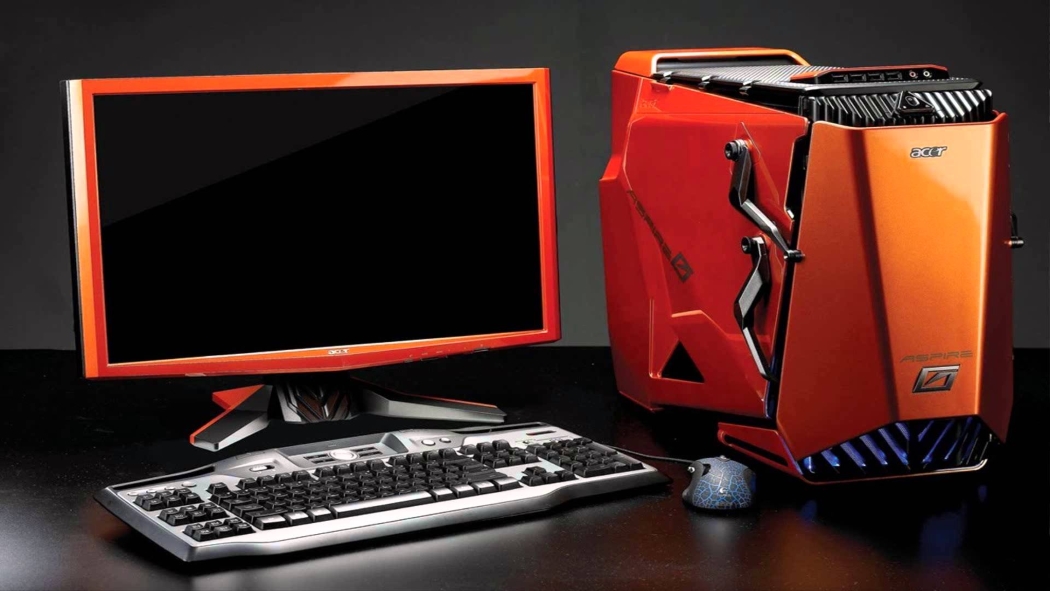
You can pick up and buy a computer case yourself in the corresponding catalog at the link provided. And below we will tell you what is important to pay attention to when choosing.
From small to large
The primary criterion for choosing a computer case, perhaps, is its size and, accordingly, compatibility with motherboards of a particular format (see the article"How to choose a motherboard for a computer?"). There are five main form factors of the enclosures: Mini-ITX, Desktop, Mini Tower, Midi Tower and Full Tower.
 |
Mini-ITX — the most compact cases for Mini-ITX mothers. They can be both thin and cubic. The former are designed to build PCs that act as home multimedia centers (HTPC), and the latter are designed for multi—disk NAS storage and compact gaming systems (SteamMachine). Thin cases are either completely devoid of PCI expansion slots, or have low—profile slots, that is, they are compatible only with low-profile video cards (maximum — GeForce GTX 750 Ti). Cubic enclosures have two full-fledged PCI slots and often allow you to install even long video cards (up to 30 cm).
Cubic Mini-ITX enclosures are compatible with full-size ATX power supplies, while thin ones are only compatible with miniature SFX, TFX, or even require an external remote PSU (see the article"How to choose a power supply for a computer?"). The power supply can be supplied as a set or absent. Seats for 2.5-inch disks are guaranteed one or two. But with 3.5-inch mounts, it happens in different ways: cubic cases have up to four such mounts, and thin ones may not have any. Fasteners of 5.25" can be completely absent even in cubic cases, not to mention thin ones. The main disadvantage of Mini-ITX cases is the sloppy laying of wires and, as a result, poor ventilation.
Desktop — the same thin Mini-ITX cases, but oriented to installation in a horizontal position (in a niche under the TV or as a stand for the monitor). Some Desktop cases are equipped with a stand for installation in an upright position, which allows you to hide the PC behind a monitor or TV.
 |
Mini Tower — medium-sized enclosures for microATX motherboards with four PCI expansion slots (you can install two dual-slot video cards or one graphics card plus, for example, network and sound cards). Due to the low cost of both cases and materials (on junior chipsets), Mini Tower is most often used for assembling office PCs. However, nothing prevents you from assembling a powerful gaming system in a high-quality MiniTower case. The location of the ATX power supply in most cases is upper, that is, the PSU participates in the air circulation inside the case. It is guaranteed at least one slot for a 5.25-inch optical drive and a 3.5-inch card reader, as well as at least two slots for 3.5-inch HDD and at least one slot for a 2.5-inch SSD.
Midi Tower — full-size enclosures for ATX motherboards (seven PCI slots), and in some cases even E-ATX (Intel LGA2011-v3 platform, six slots for RAM). Thanks to the widest assortment, Midi Towers are used as the basis of a wide variety of PCs: home multimedia, gaming and even heavy-duty enthusiasts. In cheap MidiTower cases, the location of the ATX power supply is upper (a simple PSU can be supplied as a set), and in more expensive ones — lower, that is, the PSU (purchased separately) does not draw in hot air released by other PC components, and as a result it works quieter.
There are at least two 5.25-inch slots, which allows you to install not only an optical drive, but also a rheobase (can be supplied with the case) or even an information screen with temperatures (again can be included). There can be up to eight slots for 3.5-inch HDDs, and half of them are often made removable to fit a long graphics card. And seats for 2.5-inch SSDs are increasingly hidden behind the motherboard mounting panel.
 |
Full Tower is the largest and heaviest cases for ATX, E—ATX and XL-ATX motherboards (ten PCI slots for a bundle of four video cards). The large weight (up to 20 kg) minimizes vibration, so that the PC does not emit an unpleasant ringing sound characteristic of cheap thin-walled cases. However XL-ATX motherboards and, as a result, Full Tower enclosures are gradually retiring. They have already been replaced by a new unofficial form factor Super Tower, which accommodates extended functionality in the dimensions of the classic Midi Tower.
The distinctive features of Super Tower are: mandatory compatibility with wide E-ATX motherboards, hidden wiring behind the motherboard mounting panel (improves air circulation inside the PC), the presence of easy-to-install dust filters at the fan mounting points and the ability to install a liquid cooling system (factory or hand-assembled). Optionally, SuperTower enclosures can be equipped with a transparent side window — this does not bring practical benefits, but from an aesthetic point of view it takes place, especially if the other computer components have a backlight. The Full Tower and Super Tower enclosures are designed exclusively for avid gamers and computer enthusiasts.
Variety of brands
 |
The products of several dozen manufacturers of computer cases for every taste and purse are presented on the east european market. Of the inexpensive Mini and Midi Tower solutions, the Aerocool models (convenient assembly), Zalman (quiet fans are pre-installed) and Deepcool (cheaper than the two above-mentioned brands with comparable performance quality) deserve attention first of all. Cooler Master and Fractal Design offer the most practical Mini-ITX enclosures. And the most spacious Full Tower and Super Tower cases are produced by Corsair, Thermaltake and a new player in the market — NZXT (a sub-brand of Razer). But when choosing a computer case, do not focus on practicality alone, but choose the one that you like outwardly. After all, all other components of the PC will be hidden from view, and the case will always be in sight.
Smart camera, "smart" scales and three more devices with "brains" and the possibility of remote control.
The equipment of such devices, usually, includes a separate chest cardiodetector.
With nimble drives, data is exchanged in a matter of seconds.
Innovative headphones, a smart bracelet, a spherical camera and a couple more interesting devices.
Sandwich makers do not limit the possibilities in cooking with sandwiches alone.
Was this article useful? Yes0 No0 |
Articles, reviews, useful tips
All materials